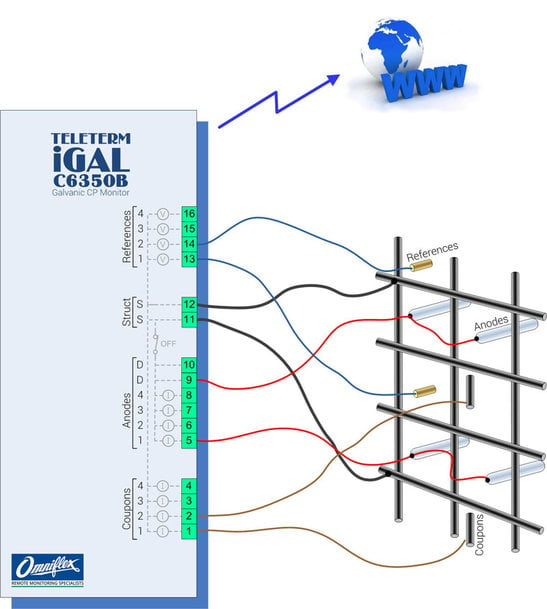www.magazine-industry-usa.com
19
'21
Written on Modified on
Controlling corrosion with cathodic protection
The importance of remote monitoring in cathodic protection systems.

For critical infrastructure, like ports, harbours and industrial pipelines, cathodic protection (CP) is an important tool to protect assets from an increasing risk of corrosion. If corrosion levels aren’t controlled using CP systems, structures could become unsafe and face closure. Here David Celine, managing director of cathodic protection specialist Omniflex, discusses the importance of remotely monitoring CP systems and how they are protecting critical infrastructure.
Corrosion is a natural, electrochemical process where metals are gradually destroyed as part of two simultaneous chemical reactions. A well-known example of this is rust, where iron is electrochemically converted by oxygen and water into hydrated iron oxides. This involves two reactions, an anodic oxidation that destroys the steel and a cathodic reduction, occurring at the same time, with electron transfer between the anodic and cathodic cell through an electrolyte.
CP systems are used to control the corrosion of steel in concrete and steel structures by ensuring that the steel remains the cathode in any electrochemical reaction. This can be done using one of two methods: Passively using a technique known as galvanic protection where the steel is connected to a metal alloy, such as magnesium, aluminium or zinc, that has a more negative electrode potential than the steel. By doing this, the steel becomes the cathode of the electrochemical cell, and the metal alloy becomes a sacrificial anode that is corroded in its place.
The second method is called impressed current cathodic protection (ICCP), where a current is externally injected into the structure to ensure that the structure remains cathodic with respect to its environment.
Applying the protection either galvanically or using impressed current is not difficult. The difficulty is knowing the correct amount of protection to apply, and monitoring that the steel is correctly protected. Too much protection, and the steel could be compromised in other ways. Too little protection and the steel will continue to corrode.
Choosing the right CP system
In galvanic CP systems, the metal structure being protected is connected to a galvanic anode that sacrifices its ions to corrosion, protecting the intended structure in the process. The resulting benefit is that the sacrificial anode, which may last anywhere from ten to fifteen years, can be replaced easier and more cost-effectively than the structure, extending the useful lifespan of the asset.
For larger structures, such as bridges and wharves, galvanic CP systems cannot deliver the current required to protect the asset. In cases like these, ICCP systems can be used instead. Here, the anodes are connected to a direct current (DC) power source often called a transformer-rectifier (TR) because of the DC power source being derived from AC power.
ICCP systems are designed to stay in operation for decades, protecting assets over long periods of time. It is common today to see structures that were designed 40 or 50 years ago with a 50-year life expectancy being rehabilitated and having cathodic protection installed to extend their life for a further fifty years. Structures that are key targets for life extension are steel and concrete wharves. Major ports such as NSW Ports and Port of Melbourne, two of the largest port operations in Australia have both embarked upon major life extension projects that involve significant cathodic protection programs.
Remote controlling CP systems
The benefits of remote monitoring the cathodic protection of assets are more compelling than ever. Firstly, as standards and regulations evolve, data accessibility and transparency are more important than ever and enterprise-wide remote monitoring platforms offer a single, easy-to-access, repository for all historical data. Secondly, by automatically recording asset performance 24/7, any abnormal events, like outages or anode failure, can be reported directly to the appropriate personnel without delay.
Thirdly, there is a significant cost saving for enterprises who are exploiting IIoT technologies to remotely monitor cathodic protection systems. Having the ability to remotely monitor and control CP systems remotely has been shown to halve the number of site visits required to meet regulatory requirements. Furthermore, the duration of site visits is lessened by the fact that preliminary testing can be done remotely prior to the visit. This significantly reduces the ongoing operating costs of the cathodic protection and can have a payback period for the investment in remote monitoring and control measured in single years.
www.omniflex.com

